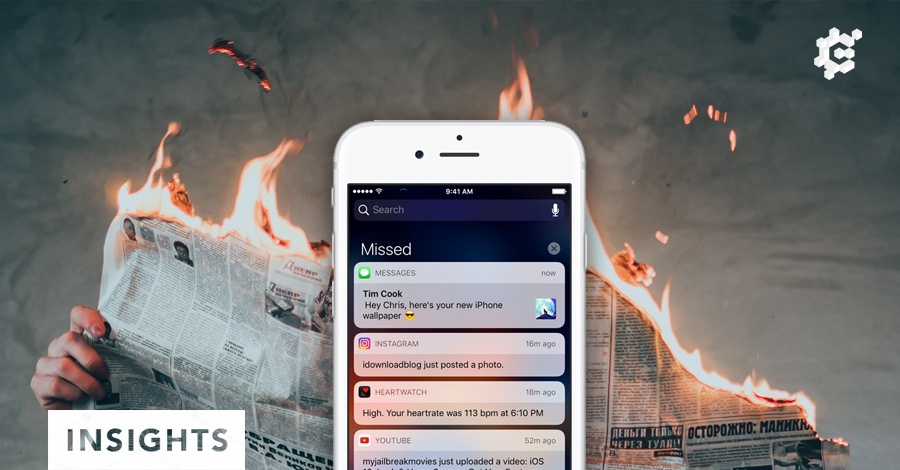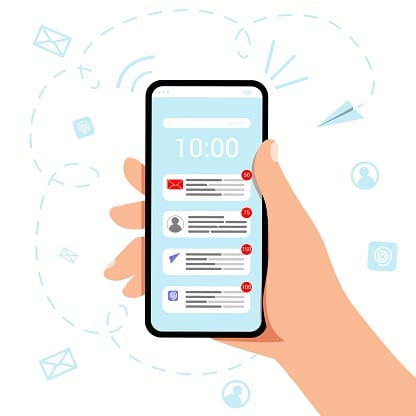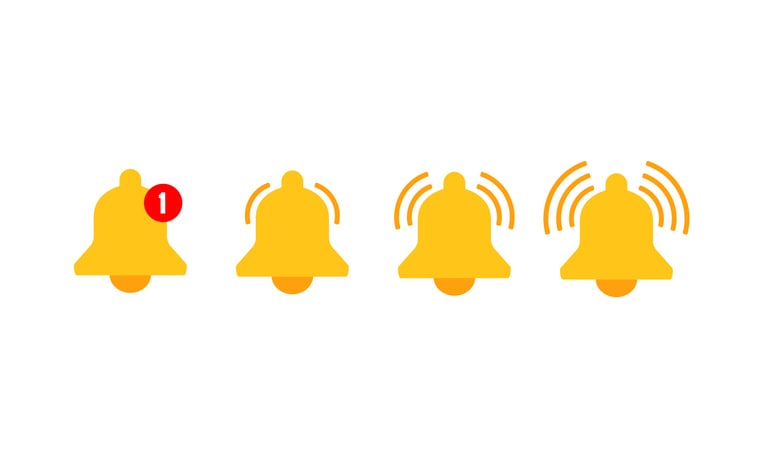

Mobile Push Notifications: Annoying or Necessary for Your Mobile App?


Picture a scenario that nearly every smartphone user has encountered. A user has recently downloaded your smartphone app or subscribed to your progressive web app. Soon, they receive daily waves of notifications from your app for your services, whether it’s two each day—or ten.

Sometimes the user will ignore these notifications, especially if they’re not that meaningful to them, or there are so many that they drown out other notifications. Other times, they’ll respond to the notifications and engage with your app. Of course, you want the latter to occur as often as possible.
Another scenario is that the user gets so annoyed, they either mute your notifications, or outright uninstall your app. After that frustration, they may even stop visiting your site. Definitely not something you want to happen!
These positive and negative extremes are all possible with push notifications, and it’s a fine line between appreciated and annoying that any app will tiptoe whenever they buzz a user’s phone. The question is thus raised: How do you leverage push notifications in the best possible way, that doesn’t annoy your users? And of course, should you have push notifications in the first place?
In this article, we’ll explore those questions, as well as the pros and cons of push notifications that will help you consider whether or not you should use them.

Too Pushy
Let’s look at the negatives first and get them out of the way. And the biggest negative is a word you’ve already seen in this article three times—push notifications are annoying! In fact, 52% of app users find them to be an “annoying distraction.”Sometimes the reason is that there are far too many of them. According to Localytics’s survey, receiving 2-5 notifications from an app in a week results in users opting out of push notifications, while getting 6-10 in a week has them stop using the app altogether. One very common and generally annoying example of this is found in a lot of free mobile games, which often bombard users with reminders to play.
Another complaint from users who have opted-out of an app’s notifications stems from the fact that the push notifications weren’t relevant, or personalized to their needs. Given that some 35% of all notifications are generic blasts that are the same for everyone, it’s no surprise that this became a topic of concern for users.

Push For More
Of course, while 52% find notifications annoying, that leaves another 48% who appreciate them and engage with them.
Localytics’s 2015 survey found that users launched apps with push notifications an average of 14.7 times per month, while apps without notifications were only opened 5.4 times a month – a massive 171% increase in engagement! Push notifications also improve app retention – apps with push enabled were rewarded with 65% of users returning after 30 days, while apps without push saw only 19% return over the same period. Meanwhile, apps that responded to the call of more personalized and relevant notifications were met with a 3x improvement in conversion rates!
For eCommerce businesses in particular, push notifications feature the highest improvement in engagement among industries, with 278% greater engagement. With 22.03% of all users with opt-in notifications using eCommerce apps, that’s a very, very big improvement that should push eCommerce app developers to take notice.
The advantages of push notifications extend beyond the raw statistics. With push notifications, you can have casual users hooked onto your communications channel without any unwieldy, undesirable account signups. You’ll be able to reach your visitors whether or not they’re looking at your site, and without the lengthy process of making an email blast through your provider.
Push notifications are valuable for every industry in unique ways. RedMart offers a variety of benefits to opting-in: users may become aware of flash sales as they happen, as well as receive information on discount codes and sales. These notifications also promoted deep links, and featured strong segmentation that provided different notifications to different customers depending on which features they had not used, as well as campaigns for awareness. The result was an expected 3x increase in conversion rate, and 150% increase in share of revenue of mobile channels.
When to Push

It’s clear from these figures that the answer is: Yes, push notifications are necessary! However, without a proper understanding of how to produce notifications that aren’t obstructive and annoying, they’ll just end up bogging down your business. Here’s a quick checklist of push notification “etiquette” that will help you craft your notifications and deploy them at the right time.
1. Make sure that users can customize their notifications.
50% of users say that notifications are beneficial if they can choose which apps or sites can send them notifications. Make it easy for users to choose what they want to receive, so they don’t get inundated with your messaging.
2. Send notifications at the right time.
45% of users treat notification as spam if they’re not receiving them at the right time! Maybe you shouldn’t be sending that FLASH SALE notification at 1AM, waking up a user and annoying them in the process. Studies have shown that the best time to send notifications is Tuesday, Wednesday, Thursday, and Friday, between 12NN and 5PM. Avoid weekends, too!
3. Don’t send too many notifications.
Over 74% believe that more than 5 notifications per day is way too much. Does that mean that you should be sending 1-5 per day? Not really either – even five a day is already pushing it. Depending on your industry, you may need to conduct further research to determine the optimal number per day or week to send. However, what is well-studied is the fact that a higher rate of notifications per week is directly correlated with a higher unsubscribe rate.
4. Keep them short.
The shorter your notification, the higher the click rate, to a massive degree. Specifically, notifications with 10 or fewer words are shown to have an 8.8% click rate, versus 11-20-word notifications with only 4.9%, and 21+-word notifications having a mere 3.2%. Keep your messaging concise, get straight to the point.
Pushing forward
Notifications have cemented themselves as an important component of user engagement in the modern smartphone world. However, as great a tool as they are, they can be deadly for your business without a thorough understanding of how to optimize them. The key is to tailor your notifications in such a way that they provide value to your customers, by making them personalized, timely, rich, and sent at an appropriate frequency.
Notifications won’t be the same for every industry just as they won’t be the same for every person. Capture the right formula for delivering updates to your users, and your pushes will be met with a lot of pull!
More insights
